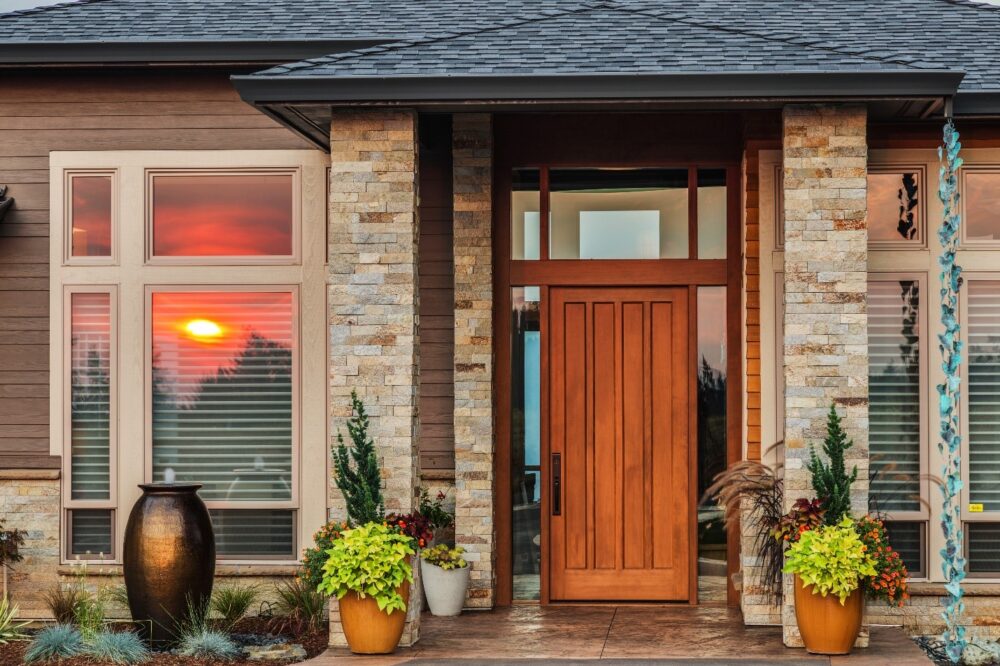The History and Charm of Craftsman Style Doors
The History and Charm of Craftsman Style Doors
Blog Article

Craftsman style doors have a rich history deeply intertwined with the Arts and Crafts movement of the late 19th and early 20th centuries. Originating in the United States, this architectural style emphasized craftsmanship, simplicity, and natural materials. Craftsman doors are characterized by their clean lines, sturdy construction, and attention to detail, reflecting the values of the movement. These doors were often handmade by skilled artisans using traditional woodworking techniques, resulting in timeless pieces that exude charm and elegance.
Craftsman style doors were popularized by influential architects such as Gustav Stickley and Frank Lloyd Wright, who sought to create homes that were both functional and aesthetically pleasing. These doors became synonymous with the Craftsman bungalow, a type of residential architecture that emphasized a close connection to nature and simple, practical design. Craftsman doors were often used as the focal point of the home's exterior, showcasing the homeowner's appreciation for craftsmanship and quality.
One of the defining features of Craftsman style doors is their use of natural materials, particularly wood. Oak, mahogany, and cherry were commonly used for their durability and beautiful grain patterns. The doors often featured intricate woodwork, such as decorative panels, raised moulding, and hand-carved details, showcasing the skill of the craftsmen who created them. These details added texture and visual interest to the door, enhancing its overall charm and character.
Another characteristic of Craftsman style doors is their emphasis on simplicity and functionality. These doors typically have clean, geometric lines and minimal ornamentation, reflecting the belief that beauty lies in simplicity. However, this simplicity does not detract from the door's elegance and sophistication. Craftsman doors often feature subtle design elements such as leaded glass panels, geometric patterns, and distinctive hardware, adding interest and personality to the door while still maintaining its understated appeal.
Craftsman style doors are also known for their versatility and adaptability to different architectural styles. While they are most commonly associated with Craftsman bungalows, these doors can complement a wide range of home designs, from traditional to contemporary. Their timeless aesthetic and classic appeal make them a popular choice for homeowners looking to add character and charm to their homes' exteriors. Whether used as a front door, interior door, or patio door, Craftsman style doors make a statement wherever they are installed.
In recent years, Craftsman style doors have experienced a resurgence in popularity as homeowners rediscover the beauty and craftsmanship of this iconic architectural style. With their timeless appeal and classic design, Craftsman doors continue to captivate homeowners seeking to add warmth, character, and charm to their homes. Whether you live in a historic Craftsman bungalow or a modern suburban home, a Craftsman style door is sure to enhance your home's curb appeal and create a welcoming first impression for visitors.
In conclusion, Craftsman style doors have a storied history rooted in the Arts and Crafts movement and continue to captivate homeowners with their timeless charm and elegance. From their use of natural materials and handcrafted details to their emphasis on simplicity and functionality, Craftsman doors embody the values of craftsmanship, quality, and beauty. Whether used in a historic bungalow or a modern home, Craftsman style doors add character and sophistication to any architectural style, making them a beloved feature of homes across the country.
General FAQs:
Craftsman style doors hold a significant place in architectural history, deeply rooted in the Arts and Crafts movement of the late 19th and early 20th centuries. This movement emerged as a response to industrialization, emphasizing the value of craftsmanship, simplicity, and natural materials in design and construction. Craftsman doors embody these principles, characterized by their sturdy construction, clean lines, and attention to detail. Crafted by skilled artisans using traditional woodworking techniques, these doors became synonymous with the Craftsman bungalow, a popular architectural style known for its practicality and connection to nature.
Prominent architects such as Gustav Stickley and Frank Lloyd Wright played key roles in popularizing Craftsman style doors and architecture. They sought to create homes that celebrated craftsmanship and reflected the beauty of the natural world. Craftsman doors became integral to this vision, serving as both functional entryways and statement pieces that showcased the homeowner's appreciation for quality and design. With their handcrafted details, rich wood tones, and understated elegance, Craftsman doors became emblematic of the Arts and Crafts aesthetic.
Craftsman style doors are distinguished by their use of natural materials, particularly wood. Oak, mahogany, and cherry were commonly used for their durability and visual appeal. These doors often featured intricate woodwork, such as raised panels, geometric patterns, and hand-carved motifs, showcasing the skill and artistry of the craftsmen who created them. Each Craftsman door was a testament to the value of handmade craftsmanship, adding warmth, character, and charm to the homes they adorned.
Despite their historical roots, Craftsman style doors remain relevant and beloved by homeowners today. Their timeless appeal, classic design, and adaptability to various architectural styles make them a popular choice for both historic and modern homes. Whether used as front doors, interior doors, or patio doors, Craftsman style doors continue to make a statement, enhancing curb appeal and adding a touch of sophistication to any home. With their enduring charm and craftsmanship, Craftsman doors are sure to remain a beloved architectural feature for generations to come.
In conclusion, Craftsman style doors have a rich history dating back to the Arts and Crafts movement, embodying the values of craftsmanship, simplicity, and natural beauty. From their origins in the late 19th century to their enduring popularity today, Craftsman doors have captivated homeowners with their timeless charm and elegance. With their handcrafted details, rich wood tones, and understated design, Craftsman doors continue to add character and warmth to homes across the country, making them a beloved architectural feature for generations.